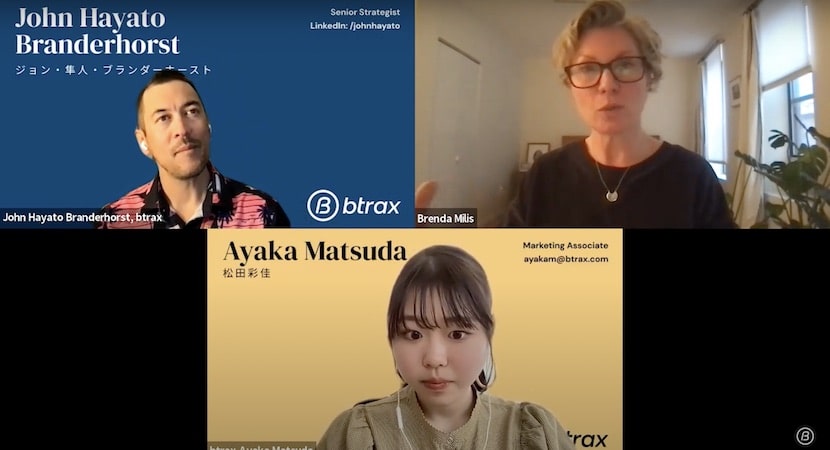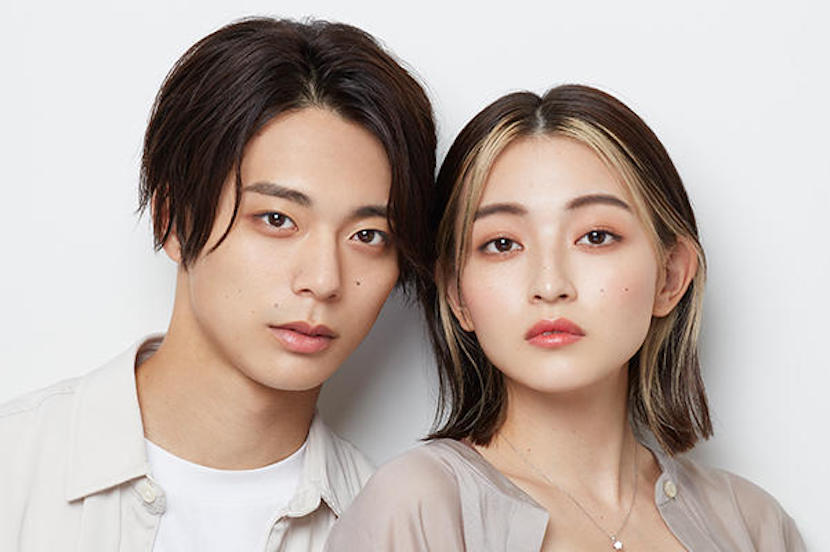
Btrax Design Company > Freshtrax > 2022 Japanese V...
2022 Japanese Visual Trends Insights from Adobe Stock
Adobe Stock is a stock photo service that provides designers, businesses, educational institutions, and government agencies with tens of millions of carefully selected, high-quality royalty-free photos, videos, illustrations, vectors, 3D, and templates that can be used for any creative project. (Ref.) Each year, the company publishes the Creative Trends Forecast, a global and regional forecast of creative trends.
Adobe Stock’s Creative Trends Forecast is divided into three sections: Visual Trends, Design Trends, and Motion Trends.
btrax has collaborated on the production of the Visual Trends section of the Creative Trends Forecast for Japan.
Brenda Milis is currently the Principal of Consumer and Creative Insights at Adobe Stock, and is responsible for the annual Adobe Stock Creative Trends Forecast for 2022.
Brenda currently leads all aspects of visual trends at Adobe Stock, including the initiative to create and publish the annual Adobe Stock Creative Trends Forecast.
This is a continuation of the previous article, “2022 Global Creative Trends Forecast from Adobe Stock”.
Q: Why did you choose Japan for this year’s regional trend forecast?
Three main reasons for why we did our first ever Japan specific trends forecast. They are:
- Japan is a country where new things and trends are constantly being created, so we felt it was very important for us to follow the trends.
- Since Adobe is a global company, we place great importance on forecasting not only global trends, but also regional trends.
- Japan is an important market and one that Adobe has been active in for a long time.
Q: What was your impression of visual trends in Japan in 2022 compared to the global trends?
The Japan specific trends were not that different from the global trends and if you read the previous articles you may realize that that may partially be due to globally everybody going through a similar experience over the past two years.

Credit: Adobe Stock / Nabi Tang/Stocksy. (Ref)
Here are the two Japan visual trends for 2022 we discovered in collaboration with btrax.
The first is the changing relationship between families. In English, we labeled it as “Family Ties”.
There is a trend in changing family relationships, which are becoming more interactive across ages with more parents and children interacting with each other as if they are friends or of the same age, rather than as parents and children.
This is resulting in stronger and more powerful emotional connections.
Needless to say, people’s emotional connections are becoming more and more important worldwide due to COVID situations.
Japan is a very interesting place to be seeing this change in family relationships.

Credit (from left): Adobe Stock / imagenavi, Adobe Stock (Ref)
The second is the promotion of diversity, which we have titled “Open-Mindedness” in English.
I believe this trend is related to the growing importance of mental health.
I see the same signs worldwide, but I feel that respect for diversity and acceptance of one’s own identity is accelerating.
Q: It must be very difficult to follow trends in other countries with different backgrounds. How do you research trends in other regions?

That’s exactly where btrax came in.
They helped us with everything from the research to the reporting when deciding on the visual trends for Japan.
Since I am an American, I needed to work with someone who was familiar with Japanese imagery and design.
Even if I could speak Japanese, I would not rely solely on my own senses to track trends in Japan because I don’t live in Japan and am not a part of daily Japanese culture.
Therefore, no matter which region’s trends I consider, I collaborate with people who are not only familiar with the design and creativity of that region but also based there.
We chose btrax because they have members who live in the Japanese culture and have knowledge of design and marketing, so we felt that they would be a good fit for our visual trend research.
The btrax members researched all kinds of visuals across all platforms, channels, ads, posters, etc., and introduced us to examples across a variety of industries. That is really important for any project involving visuals.
Q: What do you think are the most important keywords for the overall visual trends in Japan in 2022?
It’s hard to decide on one. If I had to pick a few keywords for each trend, I would say for the “Open Mindedness” trend, the keywords are compassion, acceptance, diversity, and identities.

Photo for genderless make-ups from a Japanese cosmetic brand (Ref)
We are also working with the Adobe Stock team in Japan, and we feel that the term “diversity” has expanded to include a wide range of concepts.
For example, while diversity in terms of age has been mentioned in the past, I think diversity in terms of body shape and gender has been a difficult topic to talk about.
Even now, the concept of diversity including body shape and gender is not yet completely mainstream, but it is spreading little by little.
I feel that the range of concepts included in the concept of “diversity” is expanding in Japan and it could be paraphrased as “diversity of identity.
In addition, I feel that the concept of gender is also changing.
What used to be described in the context of “femininity” and “masculinity” is now changing, and I feel that it is no longer normal to categorize just two types of gender in the first place.
In terms of “Family Ties,” keywords I associate with the trend are intimacy, connection, and closeness can be mentioned.

Credit: Monet, Adobe Stock (Ref)
I think this is really well expressed in visuals depicting families.
To show more of a heart-to-heart connection, they are depicted with their faces close together, smiles, and skin touching each other.
Trend forecasting is important to ensure that a trend is in the mainstream when the year comes, but we also need to predict whether or not the trend will even grow.
And we do that by analyzing both quantitative and qualitative data.
Looking at commercials and posters from different industries is especially important for predicting visual trends.
For example, if you are trying to communicate a message of “respect for diversity,” all industries will use similar visuals to express their respect for diversity.
In other words, by looking at the visuals used in commercials and posters in various industries and seeing if there are common visuals, we can understand what message the country is trying to convey to consumers across industries and sectors.
That’s how we identified the two trends in Japan this time around.
Q: For 2022, you mentioned Japan as a regional trend. However, we assume that before 2021, there were distinctive trends in other regions as well. Do you research both global trends and specific regional trends each year?
Yes, we do. We have team members across the globe, and we also create trends for each region.
We cover trend forecasts for all regions, and we continue to follow the trends in Japan, which we did this time.
The importance of Global trends is how we are able to find common threads throughout the world.
Because of this we place an emphasis on publishing trends that aren’t necessarily specific to a particular region but at the same time does resonate in each location.
Of course, in the case of Japan, global trends are also important because Japanese companies have customers all over the world.
There are people watching both regionally and globally. We prepare information every year so that we can provide information for both.
Q: I hope you will be able to have the experience of actually visiting each region soon.
Hopefully we’ll get to meet you all in person someday!
It’s a completely different experience to go there and “feel” the area firsthand and be with the people.
Comparing doing research online to actually going to the place and meeting the people is a different type of energy you get when you actually meet them.
Working online has become a necessity for many, but I look forward to actually visiting the countries where I have researched trends and meeting the people I worked with in person.
Conclusion
Global trends showcase themes that may be aligned across the globe but when looking deeper into local trends you are able to see small differences into how the culture may be perceiving or showcasing certain trends.
Even during COVID, Adobe Stock has been able to get on the ground insights through working with local agencies who have their finger of the pulse of what’s trending.
When you refer to the Creative Trends Forecast or use Stock Photo in the future, we hope you will remember that it was created by a team of people like this.
To learn more about Adobe Stock Trend, please watch this video.
To watch the interview, please click here.








